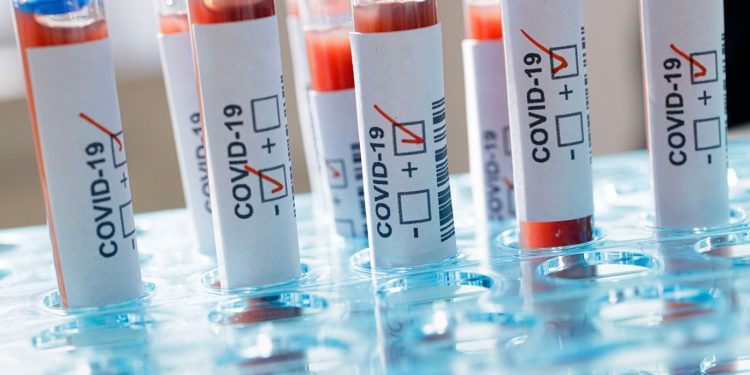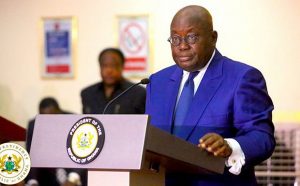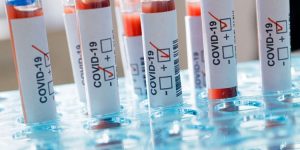Africa’s path through and beyond the Covid-19 crisis will be determined to a large extent by the actions that all social partners take in the next few weeks. The virus confronts the continent with an imperative to begin looking ahead and repurposing, reimagining and reopening African societies, business, developmental institutions and government.
The vaccine roll-out was always a race. The country that achieves herd immunity first will reap global tourism’s pent-up demand. It is a sorry state that Africa is reduced to a begging continent, unable to procure vaccines for its own people, depending once again on the goodwill of the world’s aid and not trade.
The effects of the pandemic have proven to be devastating to both the production and demand sides of the economy. The decline in GDP growth has been largely due to the marked slowdown in economic activity coupled with widespread disruptions in international, regional and domestic supply chains. Saving lives and preserving livelihoods was always going to be a monumental task.
Africa is not poor, just poorly managed. Though Africa is rich in resources, the continent and its people have been exploited for decades. Yes, several countries of Africa are among the poorest in the world and a large section of the population lives below the poverty line. While Africa carries about 20% of the global burden of disease, its scientific output represents less than 1% of the world’s share as measured by the field-weighted citation impact. Africa represents the youngest (the median age of an African individual is 19.7 years versus 38.4 years for the median individual in the US) and fastest-growing population in the world.
The implementation of the African Continental Free Trade Area (AfCFTA) agreement will boost intra-Africa trade. Africa is the world’s second-largest and second most populous continent — after Asia in both cases — and the most centrally located continent in the world with both the prime meridian (0 degrees longitude) and the equator (0 degrees latitude) cutting across it, therefore receiving direct sunlight throughout the year.
A distinctively unique continent among all seven continents of the world, it has a pink lake in Senegal, a very diverse culture, is rich in cultural heritage and diversity, a wealth of natural resources and it offers breathtaking tourist attractions. Both the world’s tallest (giraffe) and largest (African elephant) land animals are found in abundance here. And so are the world’s longest river (Nile) and the world’s largest desert (Sahara).
The equator passes through the middle of the “Dark Continent” (its terrain was inhabitable and remained unknown for thousands of years, earning it the name of Dark Continent) and it receives direct sunlight throughout the year. The largest waterfall in Africa — Victoria Falls, indigenously called Mosi-oa-Tunya, or “Smoke That Thunders” — on the mighty Zambezi River, 1.6km wide and plunging a misty 108m into the narrow Batoka Gorge is located on the border of Zimbabwe and Zambia. Africa, at about 30.4 million km² including adjacent islands, covers 6% of Earth’s total surface area and 20% of its land area.
With 1.3 billion people as of 2018, it accounts for about 16% of the world’s human population, 54 countries (56 sovereign African states plus the territory of the Sahrawi Arab Democratic Republic) are members of the African Union, a federation of African nations established in 2001 in Addis Ababa, Ethiopia, that speak more than 3,000 languages and have a combined formal GDP of $2.6-trillion.
According to the 2019 World Bank report, the top 10 African economies by GDP in billions of US dollars are: Nigeria at 448.1; South Africa at 351.4; Egypt at 303.1; Algeria at 171.1; Morocco at 119.7; Ethiopia at 95.9; Kenya at 95.5; Angola at 88.8; Ghana at 67; and Tanzania at 63.2.
The Democratic Republic of Congo (DRC), with its untapped deposits of raw minerals estimated to be worth in excess of $24-trillion, is widely considered to be the richest country in the world. It has large reserves of cobalt, gold, gems, copper, timber and uranium. However, the most valuable resource that the DRC possesses is its large reserve of diamonds. Diamonds essentially serve as a pillar to the DRC’s struggling economy. With a surface area equivalent to that of Western Europe, it is the largest country in sub-Saharan Africa, the second-largest in all of Africa and the 11th-largest in the world.
It has one of the largest forest reserves in Africa, the world’s second-largest rainforest and about half of the hydroelectric potential of the continent.
Zambia is the continent’s biggest copper producer and has the world’s ninth richest copper deposits. The big four mines, Barrick Lumwana, FQM Kansanshi, Motani and Konkola Copper Mines (KCM), account for around 80% of Zambia’s annual copper production. Most copper is used in electrical equipment such as wiring and motors, in construction (for example roofing and plumbing), and industrial machinery (such as heat exchangers). The mines account for most of the mining employment, most of the corporate social investment and most of the media publicity and are the leaders in direct fixed investment in the industry, having ploughed a collective $12.4-billion into new mining projects between 2000 and 2014. They are a barometer for the state of health of the mining industry, and by extension, of the Zambian economy.
Barrick Lumwana is wholly owned by the Canadian company Barrick, which is one of the world’s largest gold mining companies. The other three each have a majority foreign shareholding. The Zambian government, through its investment holding company, ZCCM-IH, is a minority shareholder in nearly all of them and is, in effect, the biggest shareholder in Zambia’s mining industry.
None of the African countries beneficiate and all export, only to re-import the finished product, often at about 10 times the original cost. This guarantees jobs on other continents, mostly Europe, and condemns Africa to a self-perpetuating, vicious cycle of abject poverty.
Ghana is Africa’s largest gold producer and is also a major producer of bauxite, manganese and diamonds with 23 large-scale mining companies. There are also over 300 registered small-scale mining groups and 90 mine support service companies. The mining industry in Ghana accounts for some 5% of the country’s GDP and minerals make up 37% of total exports, of which gold contributes over 90% of the total mineral exports.
About 70% of the world’s cocoa beans come from four West African countries, namely Côte d’Ivoire, Ghana, Nigeria and Cameroon. Côte d’Ivoire and Ghana are by far the two largest producers of cocoa, accounting for more than 50% of the world’s cocoa.
Nigeria is the world’s 11th-largest (and Africa’s biggest) crude oil producer, with 18 operating pipelines and an average daily production of over two million barrels in 2019. The petroleum industry accounts for about 9% of Nigeria’s GDP and for over 90% of oil export value.
Arlit, the uranium mining operation on the southern border of the Sahara desert in the west African country of Niger, ranks as the fourth largest in the world by uranium production. The Arlit mining operation comprises several open pits exploiting four main uranium deposits, namely Arlit, Tamou, Tagora and Artois in northwestern Niger.
The Rio Tinto-operated Rössing uranium mine, located near the town of Arandis in the Erongo Region of Namibia, is the sixth-largest uranium producing mine. Operating since 1976, Rössing was the first uranium mine in Namibia and one of the oldest in the world. Langer Heinrich uranium mine, located in the Namib Desert 40km southeast of Rössing, is the ninth-largest uranium producing mine in the world.
South Africa is internationally respected; is a member of the G20 and WEF; sits on the UN Security Council; has the most diversified and industrialized economy in Africa; a sophisticated and promising emerging market; modern and well-developed transport infrastructure; a healthy legal and regulatory environment for business; a strong financial and banking sector; an internationally acclaimed and independent central bank (Sarb); an innovative and dynamic technology sector; is home to the largest number of multinational headquarters.
The South Deep gold mine in South Africa is one of the largest gold mines in the world, by reserves. Located 45km southwest of Johannesburg in the Witwatersrand Basin, South Deep is also the seventh-deepest mine in the world, with a mine depth up to 2,998m below the surface. The managed mineral reserve at South Deep as of December 2018 stood at 32.8 million ounces. Mponeng gold mine located near Carletonville is owned and operated by Harmony. The mine is also currently the deepest operating mine in the world with a depth of more than 4km below the surface.
South Africa also produces over 250 metric tons of coal every year. It is estimated that almost 75% of this coal is used domestically. Nearly 80% of the energy needs of South Africa are taken care of by coal and over 90% of the coal consumed on the entire African continent is produced in South Africa. The biggest coal deposits can be found in the Ecca deposits, a vein of the Karoo Supergroup. The Ecca group covers about two-thirds of the country and contains over a third of the coal reserves in the entire Southern Hemisphere.
None of the African countries beneficiate and all export, only to re-import the finished product, often at about 10 times the original cost. This guarantees jobs on other continents, mostly Europe, and condemns Africa to a self-perpetuating, vicious cycle of abject poverty.
Africa’s path through and beyond the Covid-19 crisis will be determined to a large extent by the actions that all social partners take in the next few weeks. In the immediate term, it will be important for African countries to find smart approaches to reopening economies, building sustainability and over time, resilience while ensuring that populations are protected from the virus. The biggest injustice is exclusion… and there is no possession like land! This will require innovative thinking, along with decisive action.
At the same time, the virus also confronts the continent with an imperative to begin looking ahead and repurposing, reimagining and reopening African societies, business, developmental institutions and government, to emerge from the crisis with greater inclusion, smarter development, better services and more globally competitive enterprises.
We must accelerate our digital transformation; put renewed focus on serving the needs of vulnerable urban populations; transform our healthcare systems, with a focus on resilience, equity and social justice; strengthen sector competitiveness through consolidation and innovation; reshape manufacturing with a focus on self-reliance and resilience; catalyze the formalization of our economies; prepare for a more active government role in the economy; forge a stronger social contract between citizens and government; and sustain momentum in-country, regional and pan-African cooperation.







